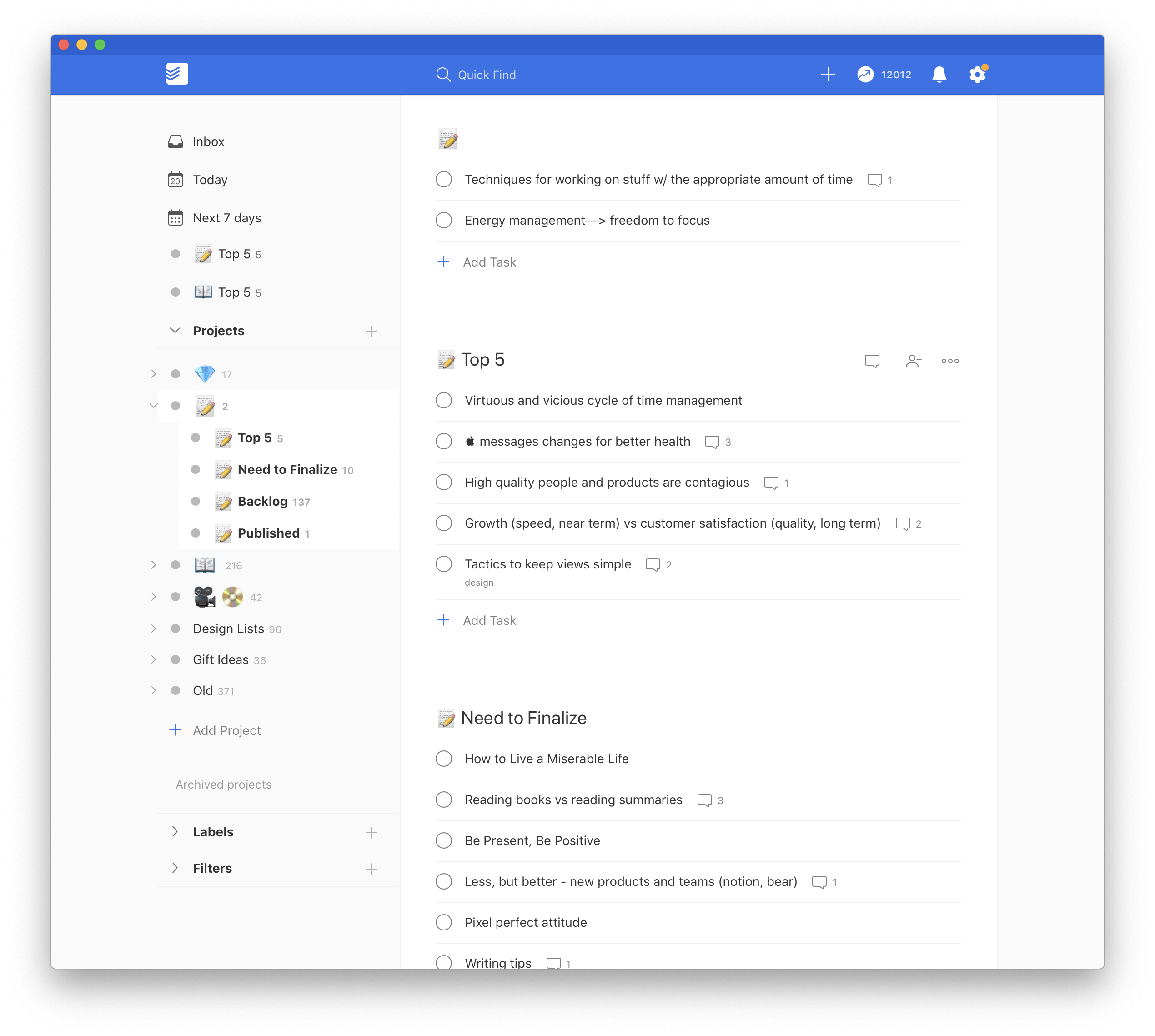How to Create a Writing Habit
I’ve tried creating a writing habit many times. And failed many times. I’d write a couple times, over the course of a couple weeks, but could never make it a consistent habit.
After many false starts, I’ve finally succeeded. As I’m writing this, it’s my 30th weekday in a row of writing 350+ words [I’m now publishing this on my 100th day in a row 😊]. Below are some of the techniques that helped me create this writing habit:
Have a Clear Why
Over the holiday break, I took time to reflect on 2018 and decide what to prioritize in 2019. Inspired by this great blog post, I decided to write a vision doc and orient my year around “Clarity Through Writing.” I picked this as my annual theme for two reasons. First, I was excited about clarifying my thoughts on a variety of topics. Second, I was excited about being able to more clearly express my ideas. Both personally and professionally. Having a clear reason for writing has helped me stay motivated through the good times and the bad.

Write Every Day
When attempting to create a writing habit in the past, I would target writing for 2–3 times per week. On the surface this may seem easier than writing every day. However, in practice, it’s more difficult. In particular, writing every day allows me to build momentum, and helps me build the writing instinct faster than when I was writing 2–3x per week. And I actually don’t write every day. For me, weekends are hard to stay consistent with my routines. So I write every week day. First thing in the morning. Eat that Frog.
Start Small
In addition to writing more frequently, I’ve found it helpful to start small when it comes to daily goals. In the past, I’d aim for 30–60m of writing. 30–60m of writing is certainly better than 10–15m. However, 30–60m is a fairly high bar when it comes to the minimum target to hit my daily goal. I now target 350 words every day. On most days I go a fair amount over my goal, but keeping the bar low helps me maintain my streak (and motivation) on those days where I snoozed too many times or didn’t have time to write in the morning so need to squeeze it in after a long day of work. The lower barrier also helps me maintain my streak on holidays when I’m not in my routine and am more likely to fall off the bandwagon.
Keep a Topic Backlog
One of the trickiest aspects of creating a writing habit is having fresh content that I am consistently excited to write about. In the past, I’d wake up and try and play it by ear. However, this never ended well. To try and move things forward I started to do “morning pages” where I’d just write what was on my mind. There is certainly a lot always on my mind. But my thoughts were never really organized enough to form coherent paragraphs. Or even sentences. So instead of writing down something on my computer in a readable format, I’d end up writing seemingly random words and diagrams via pen and paper. While I actually really like this process to help distill my thoughts, it wasn’t directly pushing forward some of my main goals of being able to better communicate my ideas to others.
I now have a new technique. First, I keep a list of topics I want to write about. As I’m writing this I have over 120 items in that list. Because this list has become so overwhelming I also have a separate Top 5 section which includes the topics I’m most excited about. When I sit down to write I look at this list. 75% of the time I’m excited to write about one of these 5 topics. If I’m not excited to write about one of the Top 5 topics I can usually pretty quickly find 1 out of the 100+ other topics that I’m excited to write about. In the rare instances that I’m not excited to write about any specific topic, I revert to more structured morning pages. Unlike before, I don’t worry too much about what I’m actually writing. I just write whatever is on my mind. Kinda like right now.

Try Blurt
While all the above items have been helpful, I believe that using Blurt was the tipping point. I first heard about it last Fall, and noted it down next to my writing habit goal. When I created my New Years resolutions and decided to focus on writing, I revisited it and thought it was worth a try. And so far so good! Below are some of the specific aspects I like about it.
Blurred Text
What initially drew my attention to Blurt was its ability to blur text. I have a tendency to prematurely optimize my work. This tendency has always added friction to my attempts at creating a writing habit. It leads to very low output for any effort that was put into the habit. One on my favorite features of Blurt is the fact that it blurs your writing as you type. This helps prevent me from editing my work too soon, helping me more efficiently jump start this habit.

Keeping a Streak
Blurt also has a feature that lets you set weekly goals. It then gamifies this goal by showing you how many days in a row you’ve hit this goal. My goal is to write 350+ words every weekday morning. As I’m writing this, it’s my 30th weekday in a row of writing 350+ words [I’m now publishing this on my 100th day in a row ]. Rain or shine, normal week or holiday weekend, I’m highly motivated to keep the streak alive. Jerry Seinfeld’s “Don’t Break the Chain” idea is quite powerful.

Get Inspired
Speaking of motivation, I’ve found classic writing books and my favorite authors to be incredibly inspiring. In late December I decided that writing would be one of my top priorities for 2019. To get me in the mood, I read On Writing by Stephen King. It’s half autobiography and half writing tips and tricks. I’d heard from many writers that it’s a terrific read. And it didn’t disappoint. In particular, I loved his genuine, fun, and no-bullshit style. In addition to his humor, he includes quite a few practical tips. He also does a good job of setting expectations. If writing is hard for Stephen King, it’s likely going to be pretty damn painful for me. Especially when just starting out. However, given enough focus he also provides great advice for how to become a better writer.
In addition to On Writing, I also read Bird by Bird by Anne Lamott. Similar to King, she demonstrates the power of authentic and truth-seeking writing. She also provides great tips and tricks. In addition to these books, I’m also inspired by others that I enjoy reading. Some of my favorites include: Tim Urban, Michael Pollan, David Perell, and Derek Thompson.
Areas to Improve
Creating a writing habit has been everything I imagined plus more. It’s incredibly satisfying to distill and document my thoughts on a variety of topics that interest me. It also is toning all the writing related mental muscles. As excited as I am about all the benefits I’ve experienced so far, there is still plenty of room for improvement. For example, while I like having a word count related goal to make sure I’m getting words down on paper, I dislike the incentive to write more for the sake of writing more. While it may help me strengthen my ability to to turn thoughts into words, it does not help me communicate succinctly. Moving forward, I’d like to put more emphasis on being concise and editing.
At some point in the future I’m going to share more of what I’ve been writing. If you’re interested in product, design, habits, and productivity, sign up for my newsletter and you’ll be the first to know of any new posts.